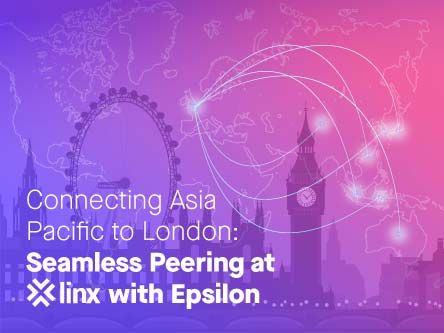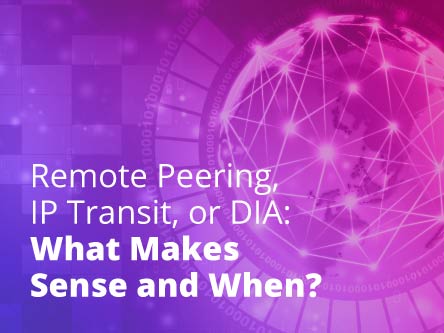How Peering on Multiple Internet Exchanges can Accelerate Your Revenue Growth
In this article we will explain how peering on multiple internet exchanges can accelerate your IP traffic and revenue growth. Discover the benefits of peering on multiple internet exchanges and increased cloud networking performance by partnering with a Network-as-a-Service (NaaS) provider.
The Benefits of Lowered Network Latency
Both direct peering and remote peering on internet exchanges can help to reduce the latency (delay) of your network traffic.
Reduced latency can be achieved by implementing peering models on multiple internet exchanges. The improved network performance and smart routing of data traffic on internet exchanges can also reduce your overall network infrastructure costs.
The lower latency achieved by peering on multiple internet exchanges can also improve the end-user’s experience. Your end-user customers will gain even better access to streaming media, cloud and on-demand content without any delay or interruption.
Unlimited access to content, satisfied end-users, low latency, and efficient operating costs will also improve the overall network value. Other networks will recognise this, and it will eventually lead to more growth opportunities for your business. It will make it a lot easier to establish new peering relationships with other strategic networks to connect with.
Bridging The Gap of Increased Networking Needs and Lack of Infrastructure
Peering on multiple internet exchanges can help to bridge the gap between increased networking needs and a lack of own infrastructure. Physical (direct) peering with other networks in data centres or on internet exchanges requires both space, power, hardware, and cabling. These components also need to be managed physically by experienced professionals.
As your IP traffic continues to grow it can be a challenge to scale, manage and operate the network architecture to meet these demands. This is where remote peering with a service provider can help.
You need only a single connection to one service provider to connect with many networks via the same peering port. For example, instead of multiple (physical) 10 Gbps ports for every direct peering connection, you need only one port for remote peering. The service provider can help you balance the traffic and create many virtual peering connections. This makes your network infrastructure more efficient, resilient, and cost effective.
By load balancing your connectivity requirements over multiple internet exchanges, you can improve the redundancy of your network. You can source the best combination of physical and remote peering connections for your IP traffic and network infrastructure.
How to Plan for Your Peering Needs with A Naas Provider
The best way to plan for your current and future IP traffic and peering needs is to consider a Network-as-a-Service (NaaS) provider. A NaaS provider can help you scale your network flexibly both up and down with all peering, data centre and cloud connectivity needs.
An example of a leading NaaS platform is Infiny from global carrier Epsilon. Via Infiny’s NaaS platform many global cloud providers and internet exchanges can be reached. Only one physical port will enable multi cloud and remote peering connections, to help you accelerate network revenue growth and run a cost-efficient network architecture.







